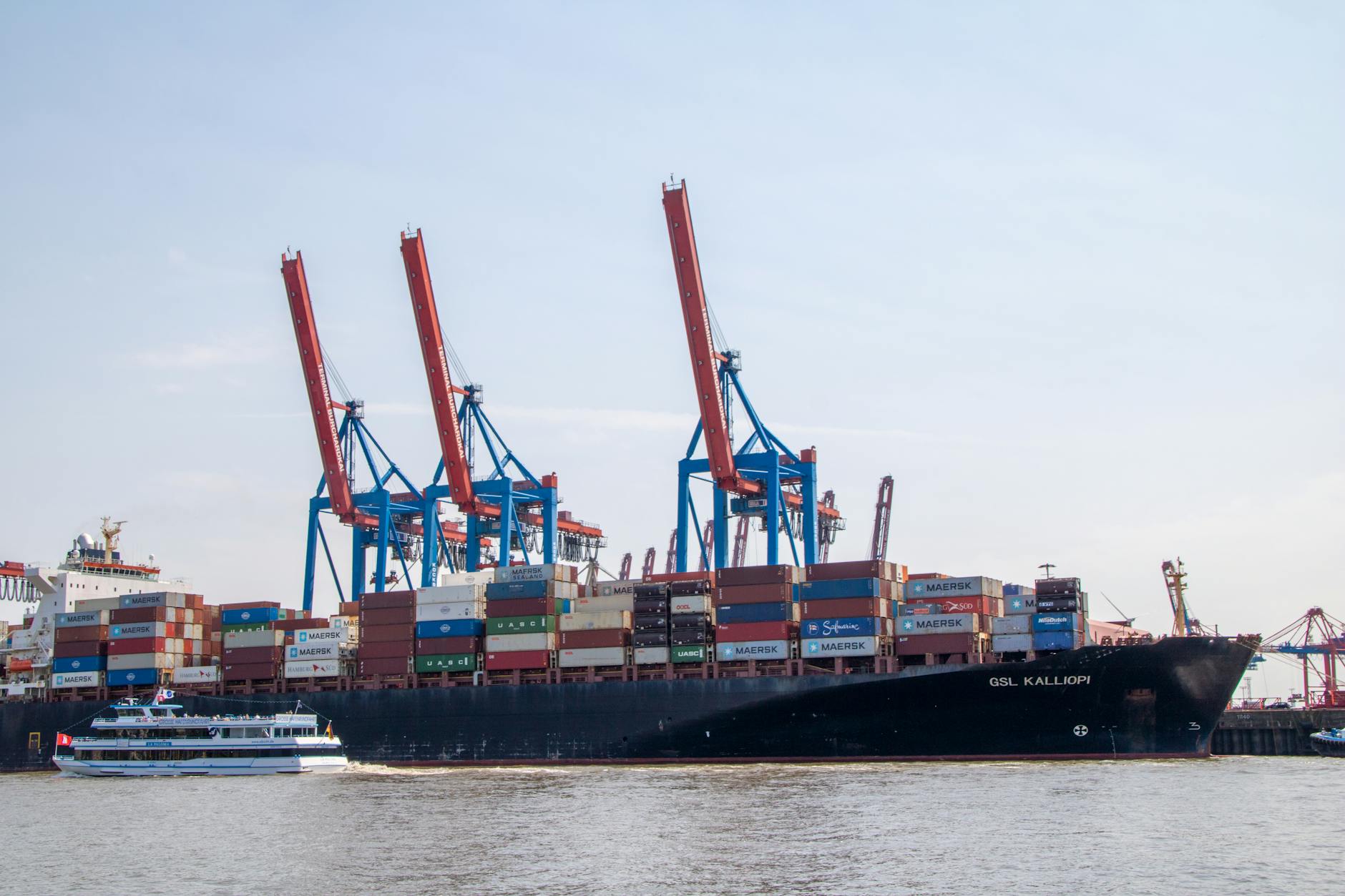Can Australia Set the Standard for Eco-Friendly Third-Party Logistics?

Importance of Eco-Friendly 3PL
As a dedicated eco-friendly supply chain strategist based in Melbourne, I often reflect on the significant influence that third-party logistics (3PL) can have on environmental sustainability. Within the sphere of pick packing and the operations of a 3pl warehouse, the focus of sustainable practices, similar to those championed at the Melbourne Convention and Exhibition Centre's eco-events, is paramount.
Environmental Benefits
Transitioning to an environmentally friendly 3PL involves reducing our carbon footprint through energy-efficient practices and renewable energy use. This shift not only supports a cleaner planet but meets the growing demand for sustainable operations from stakeholders.
Regulatory Compliance
Adherence to environmental legislation in logistics is increasingly critical, as non-compliance can lead to penalties and damage to reputation. Adopting sustainable 3PL practices ensures alignment with government regulations, helping companies stay ahead of potential legal issues.
Customer Expectations
It's clear that consumers are looking for more than just product quality—they seek brands that reflect their values. By integrating eco-friendly logistics solutions, businesses can resonate more with eco-conscious consumers, enhancing brand loyalty and trust.
As we incorporate carbon footprint reduction strategies into our warehousing and logistics, we aid companies in attaining operational efficiency while conserving the environment. Such advances ensure that our logistics evolve in line with both consumer expectations and regulatory mandates.
Current Practices in Australia
Sustainable Transportation Options
In my journey as an eco-friendly supply chain strategist, particularly focusing on sustainable transportation options, I've observed a notable shift towards greener choices. Across Australia, third party logistics firms have introduced electric vehicles and alternative fuel solutions. This transformation not only reduces the carbon footprint but also aligns with the practical needs of senior management in consumer electronics in reducing emissions. Whether you're overseeing distribution from Brisbane to Melbourne or further afield, these innovations can be essential.
Green Warehousing Innovations
Embracing green warehousing practices is pivotal for efficient logistics management. In Australia, more warehouses are opting for solar panels and LED lighting to minimise energy use. These strategies echo the carbon-neutral practices at Fed Square. As you aim to enhance warehouse efficiency, collaborating with a 3pl provider that values sustainability can make a significant impact. By integrating smart energy systems, warehouses can not only lower operational costs but also extend benefits to long-term ecological preservation.
Waste Reduction Strategies
Waste reduction is another cornerstone in achieving eco-friendly logistics. Many Australian logistics providers emphasize using recyclable and compostable materials for packaging. Implementing robust recycling programs and minimizing waste during operations help in optimising both costs and environmental impact. Strategies like these have been discussed in various environmental workshops, much like those at the CERES Community Environment Park in Melbourne, highlighting the importance of proactive waste management in achieving sustainable supply chain processes.
Challenges in Implementing Eco-Friendly Solutions
Technological Barriers
When looking to implement eco-friendly solutions in warehousing and logistics, technological barriers often arise as a major concern. For those managing complex operations, integrating advanced technologies such as smart inventory management systems with existing 3pl logistics structures can be challenging. The key is to ensure that these systems offer seamless connectivity with your warehouse’s current infrastructure. This can be particularly daunting when product lines are seasonal, adding fluctuating pressures to adapt systems for varying inventory levels.
Operational Costs
Another hurdle in adopting sustainable practices is the potential increase in operational costs. While eco-friendly technologies promise long-term savings through efficiency gains and carbon footprint reduction, the initial investment is significant. For instance, switching to renewable energy can entail capital-intensive upgrades that may deter businesses. However, examining the practices at places like the Melbourne Convention and Exhibition Centre, which is renowned for its eco-friendly events, could offer strategic insights on cost-effective sustainability measures that keep expenses manageable.
Supply Chain Disruptions
Supply chain disruptions pose additional challenges, especially as companies aim to maintain green operational strategies. Aligning with the right 3PL providers is crucial—those who can handle unpredictable supply chain fluctuations while adhering to environmental standards. This requires careful vetting of potential partners to ensure their commitment to sustainability aligns with your company’s values and operational needs. Emphasising scalability and adaptability can help mitigate disruptions, reducing delays and maintaining customer satisfaction in a way that upholds environmental commitments.
Innovations Driving Change
Smart Inventory Systems
In the world of warehousing, smart inventory systems are revolutionising operations, offering solutions that meet environmental and logistical demands. Implementing systems equipped with real-time tracking not only enhances efficiency but also contributes significantly to carbon footprint reduction strategies. For example, by streamlining pick and pack processes, these systems minimise handling times and reduce energy consumption, ultimately leading to a more sustainable warehouse operation.
Renewable Energy Integration
Renewable energy integration is increasingly commonplace in modern warehousing, offering long-term benefits for environmentally conscious businesses. Utilising solar panels or wind turbines to power operations helps warehouses cut back on non-renewable energy use. Strategically located facilities can maximise efficiency by generating much of their energy needs on-site. While initial investments can be significant, the positive environmental impact and potential cost savings in the long run make it a worthwhile consideration for forward-thinking companies.
Eco-Packaging Solutions
In response to growing concerns over plastic waste, eco-packaging solutions have gained traction among businesses aiming for sustainability. Shifting to biodegradable and recyclable materials reduces environmental impact whilst still ensuring product safety. This change is becoming more prevalent in Australia, where companies are striving to align their practices with consumer demands for sustainable products and packaging.
These innovations in warehousing, combined with strategic location choices like warehousing Sydney, underscore the movement towards a more eco-friendly landscape, meeting not only industry standards but also consumer expectations.
Checklists for Sustainable Supply Chain Integration
Assessing 3PL Partnerships
When evaluating 3PL partners, it's essential to prioritize companies committed to sustainable practices. Begin by assessing their use of renewable energy sources and carbon-neutral transportation methods similar to those employed by the Melbourne Convention and Exhibition Centre. Ensure they adhere to stringent environmental standards that align with your company's goals for carbon footprint reduction strategies. This alignment not only supports ecological objectives but also resonates with a growing consumer demand for sustainability in the electronics industry.
Deploying Technological Solutions
Implementing innovative technology solutions is a cornerstone of an eco-friendly supply chain. Lean into advancements like smart inventory systems and green warehousing innovations to optimize efficiency. These systems, akin to those highlighted in environmental workshops at CERES Community Environment Park, can significantly reduce waste and energy consumption. Moreover, integrating renewable energy sources, such as solar and wind, can further minimize environmental impact and operational costs over time.
Metrics for Continuous Improvement
Regular monitoring and assessment through well-defined metrics are crucial for ongoing improvement. Establish benchmarks that include the reduction of waste, energy savings, and the effectiveness of eco-packaging solutions. Emulate the meticulous carbon-neutral practices observed at Fed Square by continuously evaluating the impact of your strategies and seeking opportunities for enhancement. This proactive approach ensures that your supply chain remains adaptable to new environmental challenges and regulatory changes.


